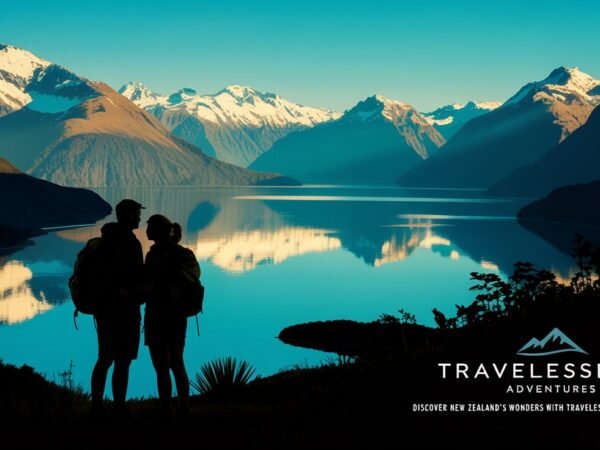Introduction to Yukevalo Island
Yukevalo Island is quickly emerging as one of the most captivating and serene destinations for travelers seeking an authentic, unspoiled island experience in 2025. Located off the beaten path, this pristine island remains relatively untouched by mass tourism, making it an ideal escape for nature lovers, culture seekers, and adventurers alike. With lush green landscapes, untouched beaches, and a deeply rooted local culture, Yukevalo Island offers a rare blend of tranquility and discovery. Whether planning a solo retreat or a memorable family vacation, this guide will help you uncover the magic of Yukevalo Island and how to explore it responsibly and efficiently in 2025.
Where is Yukevalo Island?
Yukevalo Island is nestled within a remote archipelago in the South Pacific Ocean, approximately 230 miles southeast of Fiji, surrounded by crystal-clear waters and abundant marine life. Despite its secluded nature, the island is becoming increasingly accessible thanks to improved regional transportation infrastructure. It is a short boat ride from the mainland and part of a protected zone, making it a haven for wildlife and a hotspot for sustainable tourism. Due to its strategic location, Yukevalo Island is a great starting point for island hopping to other nearby hidden gems.
Why You Should Visit Yukevalo Island in 2025
2025 marks a special year for Yukevalo Island as it steps into the spotlight with enhanced eco-tourism initiatives and newly launched community-based experiences. The local government and international environmental organizations have prioritized sustainability, ensuring that tourism supports conservation efforts rather than harming them. Unique events such as local food festivals, heritage days, and eco-workshops are set to take place throughout the year, offering travelers a deeper connection to the island and its people. With its rich biodiversity, authentic culture, and untouched beauty, Yukevalo Island stands out as a top travel destination for the new year.
How to Get to Yukevalo Island
Reaching Yukevalo Island has become more streamlined in recent years. Most international travelers arrive via major airports in the nearest city hubs, followed by a short domestic flight or train to the coastal region closest to the island. From there, travelers can board a ferry, charter a boat, or hop on a scenic seaplane to reach the island. Ferry rides typically take 1-2 hours and offer stunning archipelago views. Private transfers are available for those looking for more comfort or faster travel. It’s recommended to book transportation in advance, especially during peak seasons, to ensure availability and smooth logistics.
Best Time to Visit Yukevalo Island
Yukevalo Island experiences a tropical climate with warm temperatures year-round. However, the best time to visit is during the dry season, typically from April to September. During these months, the weather is sunny and pleasant, perfect for beach activities, hiking, and exploring the outdoors. The rainy season brings heavier showers, lush greenery, and fewer tourists from October to March. If you’re interested in attending cultural events or food festivals, the summer months tend to host the majority of island-wide celebrations. For budget-conscious travelers, visiting during the shoulder months—April and September—offers a balance of good weather and lower prices.
Top 10 Things to Do on Yukevalo Island
- Relax on Hidden Beaches: Discover secluded beaches where you can unwind without crowds.
- Explore the Coastal Caves: Join a guided kayak tour to explore the island’s mystical sea caves.
- Visit the Island’s Highest Peak: Hike to the summit and enjoy panoramic archipelago views.
- Snorkeling in Coral Reefs: Swim among vibrant coral reefs teeming with marine life.
- Local Village Tours: Engage with the island’s indigenous communities and learn about traditional crafts.
- Attend a Cultural Festival: Experience music, dance, and local food during annual heritage celebrations.
- Eco-Wildlife Trekking: Join conservation-led treks to observe rare flora and fauna.
- Island Cycling: Rent a bicycle and explore the scenic coastal roads.
- Sunset Cruises: Take a boat cruise during golden hour for breathtaking views.
- Yoga Retreats: Participate in wellness programs held at eco-lodges and beachside resorts.
Outdoor Adventures & Eco Activities
Yukevalo Island is a dream destination for eco-conscious adventurers. The island’s terrain includes tropical forests, volcanic hills, and coral-rich waters, making it ideal for hiking, diving, and wildlife observation. Conservation tours are popular and allow visitors to contribute to local ecology projects, including sea turtle monitoring and mangrove restoration. The waters around the island are a protected marine sanctuary, offering some of the region’s best diving and snorkeling opportunities. Kayaking through mangrove channels, paddleboarding along the coast, and joining guided birdwatching walks are excellent ways to explore the island while leaving a minimal footprint.
Where to Stay on Yukevalo Island
Yukevalo Island offers a range of accommodation options catering to all types of travelers.
- Luxury Resorts: High-end resorts offer oceanfront villas, infinity pools, and fine dining experiences. They often include wellness centers, private tours, and eco-certifications.
- Budget-Friendly Guesthouses: For backpackers and budget travelers, cozy guesthouses and hostels offer basic amenities and warm hospitality. Staying in these accommodations is a great way to connect with other travelers and locals.
- Eco-Lodges: For those prioritizing sustainability, eco-lodges built with natural materials powered by renewable energy are abundant. Many of these local family-run lodges offer immersive cultural activities and nature excursions.
Local Cuisine and Where to Eat
Food on Yukevalo Island is a celebration of fresh, local ingredients. The island’s cuisine is flavorful and nourishing, from ocean-to-plate seafood dishes to tropical fruits and traditional recipes passed down through generations. Must-try dishes include grilled reef fish, coconut rice, spicy seafood stews, and plantain-based desserts. Travelers will find food stalls near markets, family-run eateries, and upscale restaurants in resort areas. Vegetarian and vegan options are increasingly available, and some spots specialize in organic and farm-to-table offerings. Don’t miss out on local food fairs or cooking classes that provide insight into island culinary traditions.
Travel Tips for Yukevalo Island First-Timers
Packing essentials include breathable clothing, sturdy walking shoes, eco-friendly sunscreen, and insect repellent. Although English is spoken in tourist areas, learning a few local phrases can go a long way in showing respect and enhancing your experience. Cash is the preferred mode of payment in rural areas, so it’s best to carry sufficient local currency. Mobile connectivity can be limited in remote regions, though most hotels and resorts offer Wi-Fi. Always have a reusable water bottle, and be mindful of water consumption, as the island’s freshwater is limited. Health facilities are available, but travelers should consider comprehensive travel insurance.
Sustainable Travel on Yukevalo Island
Sustainability is not just a trend on Yukevalo Island—it’s a necessity. Travelers are encouraged to follow responsible tourism practices such as minimizing plastic use, respecting wildlife, and supporting local businesses. Many tour operators follow eco-friendly guidelines, and visitors are urged to choose experiences that prioritize conservation. Participating in volunteer programs, such as beach cleanups or educational outreach, allows travelers to give back to the community. Staying at eco-certified accommodations and purchasing handmade goods from local artisans helps reinforce a tourism model that benefits everyone, especially the environment.
Frequently Asked Questions (FAQs)
Do I need a visa to visit Yukevalo Island?
This depends on your country of origin. Many nationalities receive a visa on arrival, but it’s best to check with local embassies.
Is it safe to travel alone?
Yukevalo Island is known for its friendly locals and low crime rate. Solo travelers are welcome and often find the island ideal for peaceful exploration.
What’s the average travel cost?
Costs vary, but a mid-range traveler can expect to spend $70–$120 per day, covering accommodation, meals, and local activities.
Is there internet access?
Most hotels and guesthouses provide Wi-Fi, though remote areas may have limited coverage.
What currency is used?
The island uses the [insert local currency], and it’s advisable to exchange currency before arriving as ATMs are scarce.
Final Thoughts: Is Yukevalo Island Worth Visiting?
Absolutely. Yukevalo Island is more than just a beautiful destination—it’s a living example of how tourism and conservation coexist. From its untouched beaches to its thriving local culture and eco-initiatives, the island offers a refreshing and rewarding experience that stays with you long after the trip ends. Whether you’re seeking adventure, peace, or cultural connection, Yukevalo Island in 2025 is the place to be. Book your journey early, pack responsibly, and prepare to discover a true hidden gem.
Do Read: Tokyo Uncovered: 16 Mind-Blowing Facts That Make the World’s Biggest City Unforgettable













